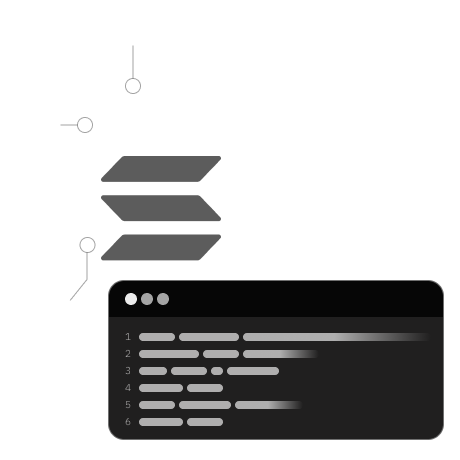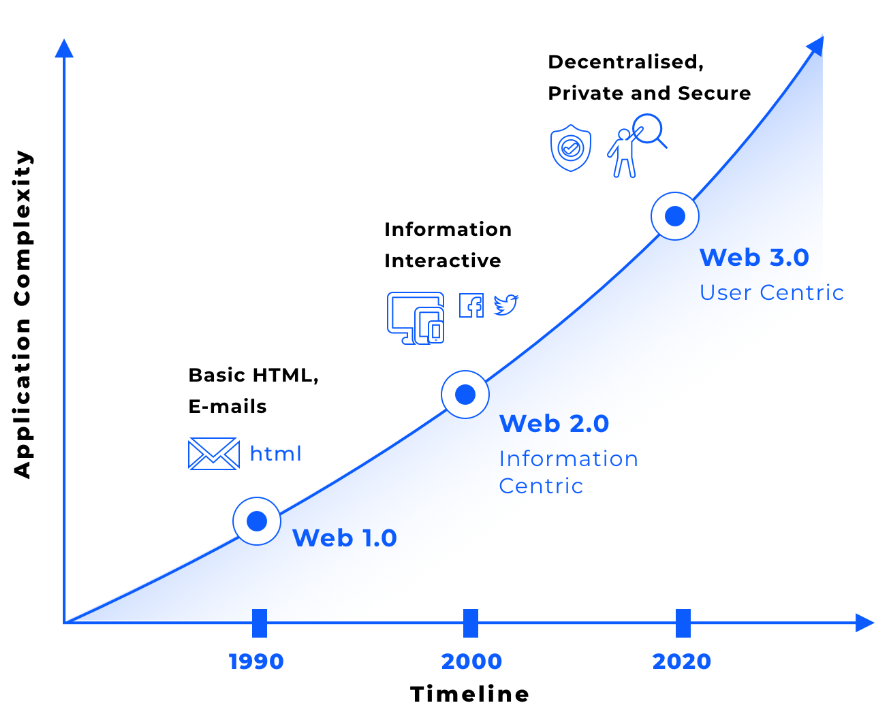
Web3 represents a transformative shift in internet interaction and user experience. It's an evolution towards a more user-empowered online environment, where individuals have greater control over their digital identity, data, and assets. At the core of Web3 lies blockchain technology, which is pivotal for its decentralization, security, and trustworthiness. Web3's decentralized nature promises enhanced security, transparency, and better regulatory compliance for users and creators alike, marking a significant shift towards more autonomy and openness online.
The evolution of the internet began with Web 1.0, a read-only, syntactic web developed by Tim Berners-Lee. This era was characterized by static web pages created by a few, with minimal interaction among users. Web 1.0 was predominantly a read-only web with static sites.
Web 2.0 marked a shift to a more interactive internet. Beginning around 2004 with the rise of social media, Web 2.0 is known for its user interactivity, usability, and system compatibility. However, this version is dominated by large tech companies, leading to concerns over individual empowerment and data control.
Web 3.0 emerged around 2014, following the launch of Ethereum. Dubbed the read-write-execute web, Web 3.0 enhances user utility and anonymity. It promises a more dynamic and interactive web experience, where users have increased control over their identity and privacy. Essentially, Web 3.0 envisions an internet owned by its builders and users.

Web3 is characterized by:
- Verifiability: Transparency and ease of validation for information and transactions.
- Trustlessness: Interactions that do not rely on intermediaries or third-party trust.
- Self-governance: Community-based decision-making and rule enforcement through code, not central authorities.
- Permissionlessness: Open access for participation and service utilization.
- Distribution and Robustness: Widespread data distribution across multiple computers for enhanced resilience.
- Statefulness: Persistent recording of action history, vital for complex applications.
- Native Built-in Payments: Inherent support for cryptocurrency transactions.
Despite its potential, Web3 faces challenges, including:
- User Experience: Web3 products often lack the refined user experience of Web2 solutions, which have been developed over two decades. The practical
utility and adoption of Web3 offerings, like NFTs, are still unclear to many.
- Consumer Protection: Recent failures in some Web3 projects have highlighted the need for improved consumer and investor protections, drawing attention from regulators and the public.
- Awareness: Public understanding and acceptance of Web3 require education, similar to the earlier internet generations.
The progression from the static Web 1.0 to the interactive Web 2.0, and now to Web3, reflects a significant shift towards a user-controlled internet. Web3, with its verifiable, trustless, and self-governing nature, facilitates native payments and robustness, heralding a new digital era. Web3 is set to introduce novel technologies like intelligent systems, decentralization, the metaverse, digital assets, and more. As Web3 continues to evolve, it's crucial to engage with and understand this transformative landscape, shaping the future of our digital experiences.